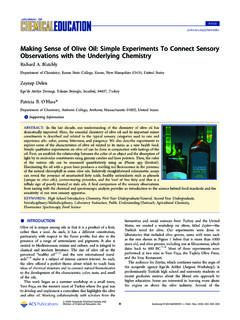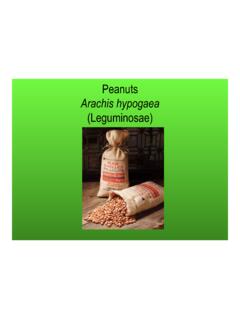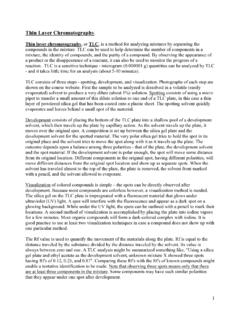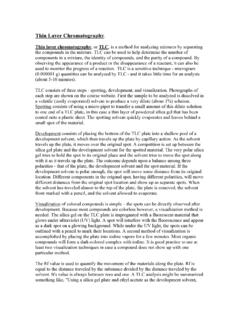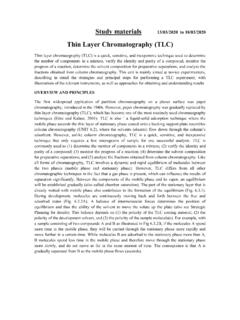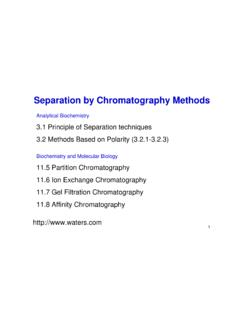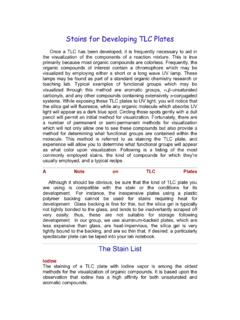Transcription of Experiment 6 — Thin-Layer Chromatography
1 Chem 21 Fall 2009 1 Experiment 6 Thin-Layer Chromatography _____ Pre-lab preparation (1) An introduction to TLC can be found at (ignore the little green note blocks within that text, and we'll be using screw-cap jars, not beakers.) (2) In a few sentences, describe how TLC works, and sketch what a TLC plate might look like after development with solvent. (3) Use your drawing to show how the Rf value is determined. Thin-Layer Chromatography (TLC) is an extremely valuable analytical technique in the organic lab. It provides a rapid separation of compounds, and thereby gives an indication of the number and nature of the components of a mixture.
2 TLC can also be used to identify compounds by comparison with known samples, to check the purity of a compound, or to monitor the progress of a reaction, an extraction, or a purification procedure. This Experiment will introduce you to the mechanics of TLC, and the chemical principles behind it. In the first part, you will separate the soluble components of spinach extract; in the second, you will analyze the compounds you separated by extraction in the last lab. Principles of TLC. TLC is normally done on a small glass or plastic plate coated with a thin layer of a solid the most common are silica (SiO2) or alumina (Al2O3).
3 This is the stationary phase. The mobile phase is an organic solvent or solvent mixture. The sample mixture is applied near the bottom of the plate as a small spot, then placed in a jar containing a few ml of solvent. The solvent climbs up the plate by capillary action, carrying the sample mixture along with it. Each compound in the mixture moves at a different rate, depending on its solubility in the mobile phase and the strength of its absorption to the stationary phase. When the solvent gets near the top of the plate, it is allowed to evaporate, leaving behind the components of the mixture at various distances from the point of origin.
4 The ratio of the distance a compound moves to the distance the solvent moves is the Rf value (retention factor). This value is characteristic of the compound, the solvent, and the stationary phase. Experiment 6 Fall 2009 2 In column Chromatography , the sample is carried down a column of silica or alumina by solvent, and the separate components of the mixture are captured as they elutes from (exit) the column. This can be done by allowing the solvent to flow under the force of gravity, but this is slow. Today, organic chemists use a technique called "Flash Chromatography ", in which the solvent is pushed through the column with a little air pressure.
5 A related technique for especially difficult separations HPLC High-Pressure Liquid Chromatography that uses a very high-quality stationary phase and high solvent pressure to accomplish separations. Silica and alumina are relatively polar stationary phases. Both have OH groups on their surfaces that interact strongly with polar compounds. Such compounds are adsorbed strongly and therefore move along the plate slowly, while non-polar compounds are absorbed only weakly and are therefore carried along the plate more quickly. Of course, solvent polarity also affects how fast compounds travel.
6 Polar compounds are carried along quickly by polar solvents, but move slowly or not at all with non-polar solvents. Because non-polar compounds don't adhere strongly to the silica, they tend to move more quickly in most solvents. The table below lists several common chromatographic solvents in order of increasing dielectric constant, , which is a measure of bulk polarity. Since a solvent's chromatographic "eluting power" (ability to move compounds) is roughly related to its polarity, this is an approximate eluotropic series. Eluotropic series Solvent Solvent alkanes 2 isopropyl alcohol benzene acetone diethyl ether ethanol chloroform methanol ethyl acetate acetonitrile dichloromethane water * dielectric constant (debyes) (Data from JA Landgrebe Theory and Practice in the Organic Laboratory, 4th ed, p 68 and AJ Gordon, RA Ford The Chemist's Companion, pp 3 - 14.)
7 Experiment 6 Fall 2009 3 Experiment A. Plant pigments. Plants use a number of different pigments in their light-harvesting systems. These compounds belong to the chlorophyll and carotenoid classes. Representative members of these groups, chlorophyll (a and b) and -carotene are shown below. NMgNNNROOOCH3 Chlorophyll a: R = CH3 Chlorophyll b: R = CH=OOO!-carotene TLC will allow you to separate these pigments in a sample of spinach extract. You should be able to see spots from several carotenes, including -carotene, -carotene, whose endocyclic double bonds are shifted one position (out of conjugation) relative to the isomer, and several oxygen-containing carotene derivatives called xanthophylls.
8 All should appear as yellow or orange spots on the TLC plate. In addition, you should see spots corresponding to the green chlorophylls a and b as well as gray spots for pheophytins a and b. Pheophytins are just the chlorophylls with the Mg2+ replaced by two H+s. Begin by going to Valentine and fetching a medium-sized wad of fresh just A solution of spinach extract in 1:1 acetone and petroleum ether will be provided. You're welcome. (This solution was prepared by adding the solvent mixture and sand to the spinach, then grinding it thoroughly with a mortar and pestle.)
9 The sand tears up the cell walls and allows the organic compounds to dissolve in the solvent. The dark green solution was then washed with water in a separatory funnel, dried, filtered, and stored in a cold, dark place ( , a refrigerator. We'll assume that the light does goes out when you close the door.) Plastic-backed silica TLC plates ( x cm) will be provided. Be sure you handle these by the edges. Draw a light pencil line about 1/3 to 1/2 inch from the bottom of one plate. Estimate, don't measure all you're doing is marking the starting point it just has to be high Experiment 6 Fall 2009 4 enough that your sample mixture is above the solvent level!
10 You're going to use a capillary micropipet to make three separate spots along the pencil line, so make three evenly spaced "tick" marks with the pencil to indicate where you will place these spots. (Before you spot a real TLC plate, practice on a piece of filter paper try to make as small a spot as possible.) Now that you're proficient, go ahead and spot the TLC plate. Make the first spot as small as possible (1 mm in diameter or less). Next, make a wide spot by holding the capillary against the plate. Third, make as small a spot as you can, give the solvent a few seconds to evaporate, spot again, and repeat the process a few times to build up the concentration without widening the spot excessively.
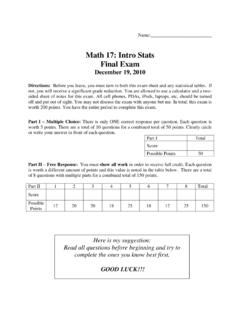
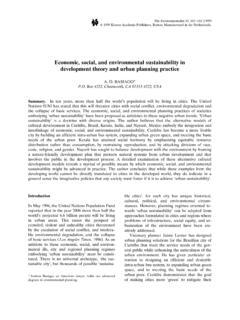

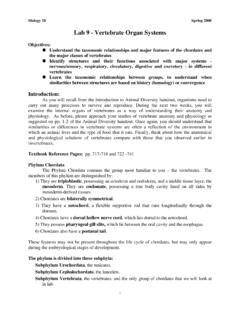
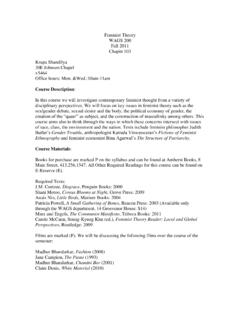
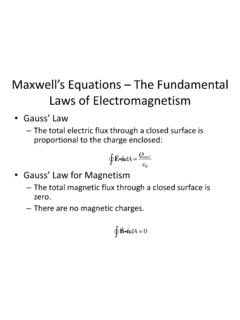
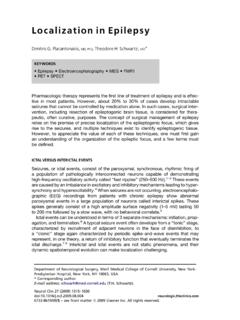
![[Fill-in-the-blank] tests measure and multiple choice ...](/cache/preview/5/e/e/9/b/f/1/7/thumb-5ee9bf17e1539b3a63fea89d05cad259.jpg)
